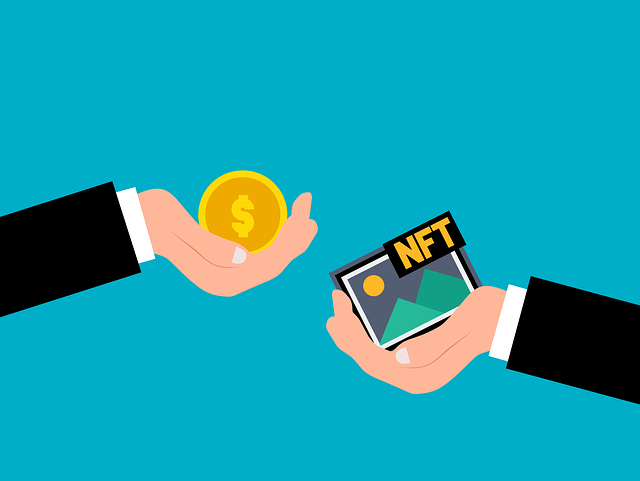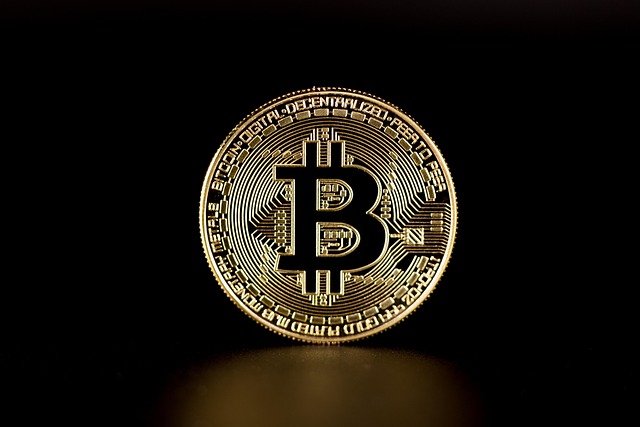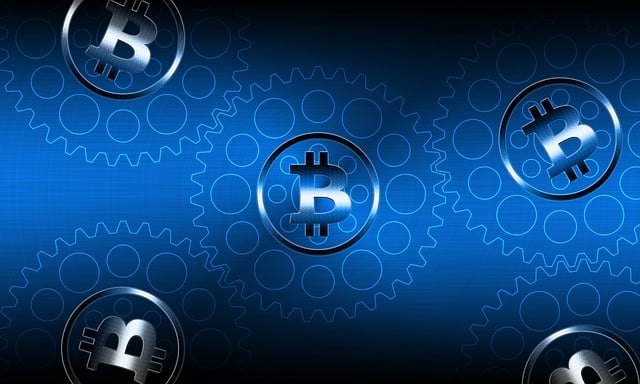How does crypto exchange works: Complete Guide 2025
Author: Jameson Richman Expert
Published On: 2025-11-05
Prepared by Jameson Richman and our team of experts with over a decade of experience in cryptocurrency and digital asset analysis. Learn more about us.
How does crypto exchange works is one of the most common questions for new crypto users and traders. This article explains, step-by-step, how centralized and decentralized crypto exchanges operate, the core components (order books, matching engines, custody, liquidity), the differences between exchange types, practical examples of a trade flow, security and regulatory considerations, and actionable tips to choose and use an exchange safely in 2025.

Quick summary
Crypto exchanges are platforms that enable users to buy, sell, and swap cryptocurrencies. Centralized exchanges (CEXs) act as intermediaries that custody funds and match orders via an order book and matching engine. Decentralized exchanges (DEXs) use smart contracts and automated market makers (AMMs) to enable peer-to-peer swaps without custodial control. Understanding how exchanges work helps you reduce fees, manage risk, choose the right platform, and trade with confidence. Below you’ll find practical steps, examples, and trusted resources.
Table of contents
- What is a crypto exchange?
- Types of crypto exchanges
- How centralized exchanges work (step-by-step)
- How decentralized exchanges and AMMs work
- Core components explained: order book, matching engine, liquidity, custody
- Fees, slippage, and price discovery
- Regulation, KYC, and legal considerations
- Security best practices
- How to choose the right exchange
- Actionable trading setup and examples
- Recommended resources and platforms (with signup/demo links)
- FAQs and conclusion
What is a crypto exchange?
A crypto exchange is a marketplace for buying, selling, and trading digital assets like Bitcoin, Ethereum, and thousands of altcoins. Exchanges provide price discovery, liquidity, custody options, and trading tools (charts, order types, APIs). For a high-level technical overview, see the Wikipedia entry on cryptocurrency exchanges.

Types of crypto exchanges
- Centralized Exchanges (CEX): Operated by companies. They custody user funds (hot and cold wallets), maintain order books, and match orders. Examples: Binance, Bybit, MEXC, Bitget.
- Decentralized Exchanges (DEX): Run on-chain using smart contracts. Users trade directly from wallets. Examples: Uniswap, SushiSwap, Curve.
- Hybrid Exchanges: Combine on-chain settlement with centralized order matching or custody solutions.
- Broker/OTC Services: Provide direct purchase/sale at fixed prices or through over-the-counter desks (useful for large orders).
How centralized exchanges work (step-by-step)
Below is a typical flow for a centralized exchange trade:
- Account creation and verification: You sign up, set up 2FA, and complete KYC/AML if required.
- Deposit funds: Deposit fiat (bank transfer/credit card) or crypto to the exchange wallet.
- Order placement: Place a market order (immediate execution) or a limit order (execute at a specific price). The exchange’s order book lists bids and asks.
- Matching engine: The exchange’s matching engine pairs buy and sell orders based on price/time priority.
- Trade settlement: The exchange updates account balances in its ledger instantly; on-chain settlement may happen only for deposits/withdrawals.
- Withdraw or hold: You can withdraw funds to self-custody or hold on-exchange for trading.
Example: executing a trade on a centralized exchange
Imagine you want to buy 0.1 BTC at market price. You place a market buy order for 0.1 BTC. The matching engine takes the best available sell orders from the order book(s) until 0.1 BTC is filled. Your account balance shows +0.1 BTC and the corresponding fiat/debit is removed. If you later withdraw that BTC, the exchange will create an on-chain transaction to send it to your wallet (subject to network fees).
Core components explained
Order book
An order book is a live list of buy (bids) and sell (asks) orders sorted by price. Market participants place limit orders (post to the book) or market orders (take liquidity). Centralized exchanges maintain a high-performance order book—matching thousands to millions of orders per second on major platforms.
Matching engine
The matching engine is the exchange’s core software. It pairs orders by price and time priority. Performance (latency, throughput) is critical—especially for high-frequency traders. The matching engine updates internal ledgers instantly; on-chain settlement occurs only when users deposit/withdraw assets.
Liquidity and market makers
Liquidity comes from market makers (professional traders or automated bots) who place both buy and sell orders, narrowing spreads and enabling large trades with lower slippage. Liquidity pools on DEXs are the AMM equivalent, where liquidity providers seed pools and earn fees.
Custody (hot wallet, cold wallet, and ledgers)
Exchanges use a combination of hot wallets (connected to the internet for operational needs) and cold wallets (air-gapped) for security. Internally, most exchanges maintain an off-chain ledger of user balances to enable fast trading and transfers between users without creating on-chain transactions for every trade.

How decentralized exchanges (DEXs) and AMMs work
DEXs use smart contracts to enable peer-to-peer swaps directly from user wallets. The most common DEX design in 2025 uses Automated Market Makers (AMMs) where prices are determined by token reserves in liquidity pools using formulas such as x * y = k (constant product), popularized by Uniswap.
AMM 101 — how pricing works
With a token pair (Token A and Token B) in a pool, price is derived from the ratio of reserves. When someone swaps Token A for Token B, the reserves change, and the price updates. Fees are collected and distributed to liquidity providers (LPs).
DEX trade flow example
- User connects wallet (e.g., MetaMask).
- User approves token spend to the DEX smart contract.
- User submits a swap transaction to the blockchain.
- Smart contract computes output amount using pool reserves plus fees (and ensures slippage/tolerance).
- Blockchain confirms the transaction; funds are transferred directly between wallets through the contract.
For a technical primer on the blockchain concepts behind DEXs, review the blockchain page.
Fees, slippage, and price discovery
Important cost factors when trading on an exchange:
- Trading fees: Charged per trade (maker/taker model). Makers add liquidity and often pay lower fees.
- Deposit/withdrawal fees: Fees for on-chain transactions (network gas) or fiat withdrawal costs.
- Spread: Difference between the best bid and ask price—tight spreads indicate high liquidity.
- Slippage: The difference between expected trade price and execution price, especially important for large orders or low-liquidity markets.
Example fee calculation: If an exchange charges 0.10% maker / 0.20% taker and you place a market buy for $10,000, a taker fee of 0.20% equals $20. Large traders can minimize fees with maker orders or VIP discounts.
Regulation, KYC, and legal considerations
Regulatory frameworks vary by country. Exchanges typically implement KYC/AML procedures for fiat on/off ramps and to comply with local laws. Before using an exchange, check its regulatory status and user protections. For official guidance, consult government resources like the U.S. Securities and Exchange Commission’s crypto resources: SEC investor bulletin on crypto assets.

Security best practices
Exchange security is critical. Follow these guidelines:
- Enable two-factor authentication (2FA) and use hardware 2FA apps (e.g., Authenticator or hardware keys).
- Use strong, unique passwords and a reputable password manager.
- Keep only trading funds on-exchange; store long-term holdings in self-custodial hardware wallets.
- Be wary of phishing and always verify the exchange domain before signing in.
- Use withdrawal allowlists and email confirmations for withdrawals when available.
For more on mobile trading security and how to use exchange apps safely, see this mobile trading guide for Binance: How to use Binance app for trading — complete mobile trading guide.
How to choose the right exchange (practical checklist)
Use this checklist to evaluate exchanges:
- Regulatory compliance: Is the exchange licensed in your jurisdiction?
- Security track record: Any past hacks? Are funds insured?
- Supported assets: Does it list the coins you need?
- Liquidity: Does the order book depth suit your trade sizes?
- Fees: Trading, deposit/withdrawal, and margin/derivatives fees.
- User experience and tools: Mobile app, charts, APIs, demo accounts.
- Customer support: Response times, help center quality.
For a curated list of platforms in a regional market, review this list of crypto trading platforms in India: List of crypto trading platforms in India — top picks.
Actionable trading setup and examples
Step-by-step: place your first crypto trade
- Pick an exchange and register an account. (See recommended sign-up links below.)
- Complete KYC and secure your account with 2FA.
- Deposit fiat or crypto to the exchange.
- Start with a small market order to understand execution. Observe the order book and fills.
- Practice with limit orders to reduce fees and minimize slippage.
- Withdraw funds to a hardware wallet for long-term storage.
Use demo accounts and practice environments
If you're new to margin or derivatives trading, use a demo account to practice without risking capital. For example, Bitget provides demo account resources to master trading strategies: Bitget demo account & app mastery 2025.
Example: Market vs Limit order
Scenario: You want to buy 1 ETH and ETH price is $3,000.
- Market order: You buy immediately; actual execution price may be slightly higher or lower due to spread and slippage—cost = price + taker fee.
- Limit order: You place a buy limit at $2,990; your order sits on the book and will execute only if the market reaches that price—may pay lower fees if it becomes a maker order.

Advanced topics: derivatives, margin, APIs, and institutional features
Exchanges offer advanced products such as perpetual futures, options, margin lending, staking, and institutional-grade APIs. These products increase leverage and complexity—understand funding rates, liquidation mechanics, and margin requirements before trading.
APIs and algorithmic trading
Many exchanges provide REST and WebSocket APIs for market data and order placement. If building algorithmic strategies, check API rate limits, latency SLAs, and historical data access. Exchanges often provide SDKs and sample code.
Institutional features
Institutions may require custody integration, prime brokerage, OTC desks, and compliance tooling. Exchanges have dedicated institutional portals and liquidity solutions.
Where to get trading signals and strategies
Signals and strategy guides can help beginners understand trade setups. Use signal services cautiously—validate performance and risk management. For curated signals and community-driven insights, see these signal resources:
- Elite crypto signals Reddit — ultimate guide
- Best free crypto signals Telegram channels — guide 2025
Popular exchanges and sign-up/demo links (trusted starting points)
Below are some popular exchanges (CEXs) used by retail and professional traders. Use these links to register or explore demo features:
- Binance — create an account here: Binance registration. For mobile trading help, see the Binance mobile guide above.
- MEXC — sign up with invite code: MEXC invite registration.
- Bitget — demo and referral: Bitget referral registration. Learn about their demo account in the Bitget guide above.
- Bybit — sign up here: Bybit invite.
Regional and niche platforms
If you’re in India or a specific jurisdiction, check local platforms and compliance. See the earlier curated list for India: crypto trading platforms in India — top picks.

Common pitfalls and how to avoid them
- Keeping all funds on exchange: Only keep funds you need for active trading on-exchange; move holdings to cold storage.
- Ignoring withdrawal allowlists and 2FA: Always enable advanced security features.
- Trading illiquid tokens: Large trades in low-liquidity tokens can lead to massive slippage and loss.
- Blindly following signal providers: Verify signals, manage position size, and use stop-loss orders.
How does crypto exchange works — real-world trade example
Example: Alice wants to swap USDT for SOL on a centralized exchange and then move SOL to a hardware wallet.
- Alice logs into her exchange account and deposits USDT.
- She checks SOL order book depth and places a limit buy order for SOL at a price she prefers.
- The exchange matches her limit order when a seller’s ask price meets her bid.
- Alice’s SOL appears in her exchange balance. She initiates a withdrawal to her Ledger address.
- The exchange signs an on-chain transaction and broadcasts it; after confirmations, the SOL is in Alice’s hardware wallet.
This illustrates custody transitions (off-chain ledger to on-chain) and the interplay of order matching and network settlement.
Glossary: key terms
- Maker: An order that provides liquidity to the order book.
- Taker: An order that consumes liquidity immediately.
- Order book: A dynamic list of buy and sell orders.
- AMM: Automated Market Maker — DEX pricing mechanism.
- Slippage: Price difference between expected and executed price.
- Custody: Who controls the private keys for assets.

Further reading and high-authority resources
To deepen your understanding, consult the following authoritative pages:
- Cryptocurrency exchange — Wikipedia
- Blockchain overview — Wikipedia Blockchain
- Investopedia: Cryptocurrency exchange definition — Investopedia
- SEC crypto investor resources — SEC
Using community tools and signals safely
Communities like Reddit and Telegram host trading signals and strategy discussions. Use these communities as educational resources rather than blind trade instructions. Explore curated community resources such as:
Checklist before every trade (quick)
- Have you verified the exchange URL and enabled 2FA?
- Is the asset liquid enough for your trade size?
- Have you checked fees and potential slippage?
- Do you have an exit plan and risk management rules (position size, stop-loss)?
- Is this a spot trade, or are you using leverage? (Leverage increases risk.)

Frequently asked questions (FAQ)
Q: Are decentralized exchanges safer than centralized ones?
A: DEXs remove custodial risk—users keep private keys—but introduce smart contract risk and potential front-running. Centralized exchanges often provide better liquidity, fiat on ramps, and user protections but carry custodial risk. Use self-custody for long-term holdings and reputable exchanges for active trading.
Q: How fast do trades settle?
A: On centralized exchanges, internal ledger updates are near-instant. On-chain settlement (withdrawals and deposits) depends on blockchain confirmation times—seconds to minutes on fast chains or longer for congested networks.
Q: What is liquidity mining and yield farming?
A: Liquidity mining involves providing tokens to DEX pools to earn trading fees and rewards. Yield farming includes strategies to maximize returns via staking, lending, and pool incentives. These strategies carry impermanent loss and smart contract risks—research thoroughly.
Conclusion
Understanding how does crypto exchange works empowers you to trade smarter: recognize differences between CEXs and DEXs, assess liquidity and fees, secure your account, and practice with demo tools before using leverage. Use the practical checklists above to evaluate exchanges and always prioritize security and due diligence.
Ready to get started? Create accounts on major exchanges to compare user experience: Binance, MEXC, Bitget, and Bybit. If you want to practice first, review the Bitget demo guide above to hone skills risk-free.
For mobile traders and community resources, check the Binance mobile guide and curated signal lists referenced earlier to learn responsibly and continuously improve.
Disclaimer: This article is educational and does not constitute financial advice. Cryptocurrency markets are volatile and may not be suitable for all investors. Always research and consider consulting a licensed financial professional before making investment decisions.